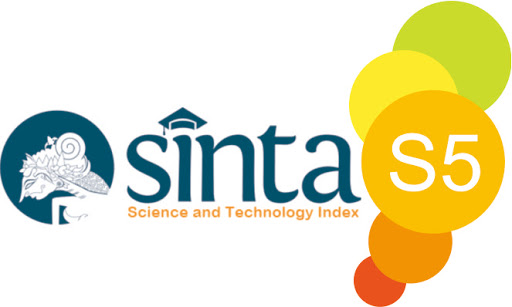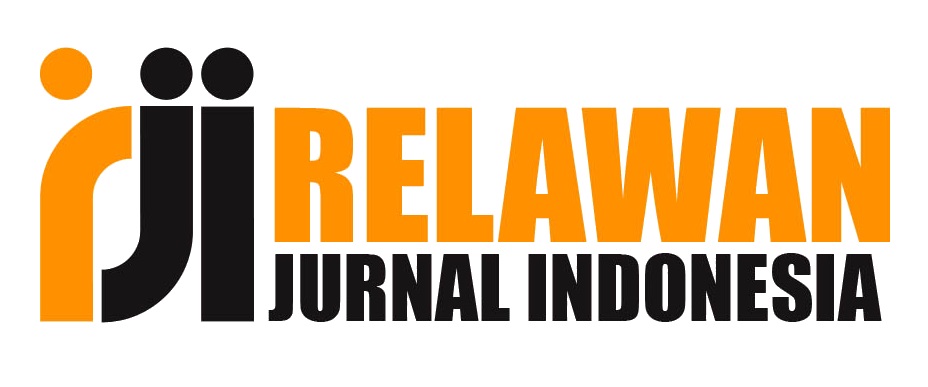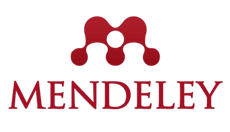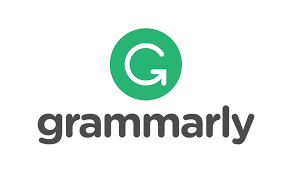Exploring Junior High School Teachers’ Ability to Identify Learners’ Autonomy: A Case Study
DOI:
https://doi.org/10.57176/jn.v5i1.162Keywords:
efl teacher, learner autonomy, teacher beliefsAbstract
Peran guru dalam membimbing siswa menuju kemandirian belajar telah banyak diakui, namun pemahaman mengenai bagaimana guru mengkonseptualisasikan kemandirian belajar dalam konteks pendidikan masih menunjukkan kesenjangan . Penelitian kualitatif ini menggunakan pendekatan studi kasus untuk mengeksplorasi perspektif teoretis dan penerapan praktis kemandirian belajar dari sudut pandang seorang guru Bahasa Inggris sebagai Bahasa Asing (EFL). Data diperoleh melalui observasi kelas dan wawancara tatap muka dengan satu responden menggunakan pertanyaan terbuka guna menggali pemahaman yang lebih mendalam. Data dianalisis dengan metode analisis tematik melalui tahapan transkripsi, pengkodean, dan penarikan kesimpulan. Hasil penelitian menunjukkan empat bidang utama, yaitu: (1) pengetahuan dan konseptualisasi guru tentang kemandirian belajar, (2) kelayakan dan kesediaan guru dalam menerapkan kemandirian belajar, (3) strategi penerapan kemandirian belajar di kelas, dan (4) refleksi guru terhadap praktik tersebut. Temuan ini memberikan kontribusi penting bagi pengembangan literatur mengenai kemandirian belajar dengan menghadirkan gambaran mendalam tentang bagaimana guru EFL memahami serta mengimplementasikan konsep ini dalam praktik pengajaran. Penelitian ini diharapkan dapat menjadi rujukan dalam pengembangan profesional guru serta mendorong penelitian lanjutan untuk memperkuat kemandirian belajar sebagai salah satu tujuan utama pendidikan.
_________________________________________________________________________________________
The role of teachers in fostering learner autonomy has been widely acknowledged, yet there remains a significant gap in understanding how teachers conceptualize this notion within the educational context. This qualitative study, employing a case study approach, seeks to explore both theoretical perspectives and practical applications of learner autonomy from the viewpoint of an English as a Foreign Language (EFL) teacher. The study involved classroom observation and face-to-face interviews with one participant as the respondent, using open-ended questions to gain deeper insights. Data were analyzed thematically through processes of transcription, coding, and interpretation to generate a comprehensive understanding of the teacher’s perspectives. Findings highlight four major areas: (1) the teacher’s knowledge and conceptualization of learner autonomy, (2) the feasibility and willingness to implement learner autonomy in practice, (3) classroom applications and strategies to support autonomous learning, and (4) reflective practices related to learner autonomy. The study contributes to the growing literature on learner autonomy by providing an in-depth exploration of how an EFL teacher interprets and enacts this concept in real classroom settings. It is expected that these findings will inform teacher professional development and encourage further exploration of learner autonomy as a pathway to enhancing independent and lifelong learning.
References
Alrabai, F. (2017). Saudi EFL teachers’ perspectives on learner autonomy. International Journal of Linguistics, 9(5), 211-231. A
l-Busaidi, S. S., & Al-Maamari, F. S. (2014). Exploring university teachers' understanding of learner autonomy. Theory and Practice in Language Studies, 4(10), 2051.
Andriani, P. F., Padmadewi, N. N., & Budasi, I. G. (2018). Promoting autonomous learning in English through the implementation of Content and Language Integrated Learning (CLIL) in science and maths subjects. In SHS Web of Conferences (Vol. 42, p. 00074). EDP Sciences.
Benson, P. (2016). Language learner autonomy: Exploring teachers’ perspectives on theory and practice. Language learner autonomy: Teachers’ beliefs and practices in Asian contexts, 114, 133.
Borisov, S. V. (2014). Ideas of constructivism in philosophy of education: From ontology to phenomenology. Life Science Journal, 11(11), 399–402. Retrieved from http://www.lifesciencesite.com/lsj/life1111/067_25870life111114_399_402.pdf
Borg, S., & Al-Busaidi, S. (2012). Learner autonomy: English language teachers’ beliefs and practices.s
Creswell, J. W. (2009). Research design: Qualitative, quantitative, and mixed methods approach. Los Angeles: Sage
Candy, P. C. (1991). Self-direction for lifelong learning: A comprehensive guide to theory and practice. San Francisco:Jossey-Bass.
Claramita, M. (2016). Revealing Tut Wuri Handayani: A student-centred learning approach-by Ki Hajar Dewantara from the early 20th century: A literature review. Jurnal Pendidikan Kedokteran Indonesia, 5(1), 14. https://doi.org/10.22146/jpki.25295
Denzin, N. K., & Lincoln, Y. S. (1995). Transforming qualitative research methods: Is it a revolution?. Journal of Contemporary Ethnography, 24(3), 349-358
Fidyati. (2016). Learning autonomy and its significance for Indonesian EFL learners. Gestempana English Education Journal, 1(1), 1–16. Retrieved from https://ejournal.bbg.ac.id/geej Holec, H. (1981). Autonomy and foreign language learning. London: Oxford
Haji-Othman, N. A., & Wood, K. (2016). Perceptions of learner autonomy in English language education in Brunei Darussalam. Language learner autonomy: Teachers’ beliefs and practices in Asian contexts, 79-95.
Holec, H. (1979). Autonomy and foreign language learning.
Keuk, C. N., & Heng, V. (2016). Cambodian ELT teachers’ beliefs and practices regarding language learner autonomy. Language learner autonomy: Teachers’ beliefs and practices in Asian contexts, 62-78.
Lengkanawati, N. S. (2014, September). Making EFL learners autonomous: Can language learning strategies help. In ALAK International Conference on Applied Linguistics in the Era of Multiculturalism (Vol. 27).
Lengkanawati, N. S. (2017). Learner autonomy in the Indonesian EFL settings. Indonesian Journal of Applied Linguistics, 6(2), 222-231.
Little, D. (1995). Learning as dialogue: The dependence of learner autonomy on teacher autonomy. System, 23(2), 175-181.
Little, D. (2007). Introduction: Reconstructing learner and teacher autonomy in language education. In Reconstructing Autonomy in Language Education (pp. 1–12). London: Palgrave Macmillan.
Littlewood, W. (2017). Self-access: Why do we want it and what can it do? In autonomy and independence in language learning (pp. 79–91). London: Routledge
Loh, C. Y. R., & Teo, T. C. (2017). Understanding Asian students learning styles, cultural influence and learning strategies. Journal of Education & Social Policy, 7(1), 194–210. Retrieved from https://www.jespnet.com/journals/Vol_4_No_1_March_2017/23.pdf
Masduqi, H. (2011). Critical thinking skills and meaning in English language teaching. TEFLIN Journal, 22(2), 185–200. http://dx.doi.org/10.15639/teflinjournal.v22i2/185-200Iftanti, E. (2012). A survey of the English reading habits of EFL students in Indonesia. TEFLIN, 23(2), 149–164. http://dx.doi.org/10.15639/teflinjournal.v23i2/149-164
Ministry of Education and Culture of the Republic of Indonesia. (2016). Salinan lampiran peraturan menteri pendidikan dan kebudayaan nomor 22 tahun 2016 tentang standar proses pendidikan dasar dan menengah [Attachment copy of education and culture minister regulation no. 22 year 2016 about standard process elementary and secondary education]. Retrieved from https://bsnpindonesia.org/wpcontent/uploads/2009/06/Permendikbud_Tahun2016_Nomor022.pdf
Nasir, C., Fata, I. A., Daud, B., & Isniati, N. (2017). Figuring the context of CTL under 2013 curriculum. A Journal of Culture, English Language, Teaching & Literature, 16(2), 149–162. https://doi.org/10.24167/celt.v16i2.487
Omodan, B. I. (2022). Analysis of emancipatory pedagogy as a tool for democratic classrooms. International Journal of Research in Business and Social Science, 11(2), 348-354.
Padmadewi, N. N. (2016). Techniques of Omodan, B. I. (2022). Analysis of emancipatory pedagogy as a tool for democratic classrooms. International Journal of Research in Business and Social Science, 11(2), 348-354.promoting autonomous learning in the classroom. Journal of Education and Social Sciences, 3, 45-52. Retrieved from https://www.jesoc.com/wp-content/uploads/2016/03/KC3_65.pdf
Patton, M. Q. (1990). Qualitative evaluation and research methods. SAGE Publications, inc.
Pham, C. (2016). Identifying sociocultural influences on high school students' motivation to learn English in rural areas in Vietnam. New Zealand Studies in Applied Linguistics, 22(1), 5.Retrieved from https://www.alanz.org.nz/wp-content/uploads/2018/11/NZSAL-2016- 221.pdf
Permatasari, N. P. I., & Arianti, N. M. M. (2016). Learner autonomy and culture in bali: Perspectives from secondary school indonesian efl context. TESOL Conference 2016. Retrieved from http://www.vnseameo.org/TESOLConference2016/materials/slides/13_1.pdf
Radnor, H. (2001). Researching your professional practice. Buckingham: Open University Press
Rochmahwati, P. (2013). Integrating active learning in a college speaking class. Journal on English as a Foreign Language, 3(1), 31–40. https://doi.org/10.23971/jefl.v3i1.60 Santosa, M. H. (2017). Learning approaches of Indonesian EFL Gen Z students in a Flipped Learning context. Journal on English as a Foreign Language, 7(2), 183-208. https://doi.org/10.23971/jefl.v7i2.689
Sherly, Dharma, E., & Sihombing, H. B. (2020). Merdeka Belajar: Kajian Literature. UrbanGreen Conference Proceeding Librari, 1.
Tapinta, P. (2016). Thai teachers’ beliefs in developing learner autonomy: L2 education in Thai universities. Language learner autonomy: Teachers’ beliefs and practices in Asian contexts, 96-113.
Taylor, L. K., Hamilton, E. R., Burns, A., & Leonard, A. E. (2022, April). Teacher Educators’ Apprenticeships of Observation and Community-Based Field Settings. In Frontiers in Education (Vol. 7, p. 754759). Frontiers Media SA.
Tran, T. Q., & Duong, T. M. (2018). EFL learners’ perceptions of factors influencing learner autonomy development. Kasetsart Journal of Social Sciences, 1–6. https://doi.org/10.1016/j.kjss.2018.02.009
Trilling, B., & Fadel, C. (2009). 21st century skills: Learning for life in our times. San Fransisco: Jossey-BassWaseso, H. P. (2018). Kurikulum 2013 dalam prespektif teori pembelajaran konstruktivis [Curriculum 2013 in constructivism learning theory]. TA’LIM: Jurnal Studi Pendidikan Islam, 1(1), 59–72.https://doi.org/10.29062/ta'lim.v1i1.632
Downloads
Published
How to Cite
Issue
Section
License
Copyright (c) 2025 Fivty Travika Sukma, Nenden Sri Lengkanawati

This work is licensed under a Creative Commons Attribution-ShareAlike 4.0 International License.
You are free to:
- Share — copy and redistribute the material in any medium or format for any purpose, even commercially.
- Adapt — remix, transform, and build upon the material for any purpose, even commercially.
- The licensor cannot revoke these freedoms as long as you follow the license terms.
Under the following terms:
- Attribution — You must give appropriate credit , provide a link to the license, and indicate if changes were made . You may do so in any reasonable manner, but not in any way that suggests the licensor endorses you or your use.
- ShareAlike — If you remix, transform, or build upon the material, you must distribute your contributions under the same license as the original.
- No additional restrictions — You may not apply legal terms or technological measures that legally restrict others from doing anything the license permits.
Notices:
You do not have to comply with the license for elements of the material in the public domain or where your use is permitted by an applicable exception or limitation .
No warranties are given. The license may not give you all of the permissions necessary for your intended use. For example, other rights such as publicity, privacy, or moral rights may limit how you use the material.
















